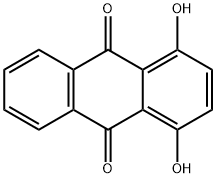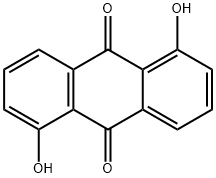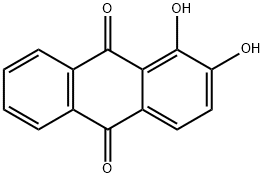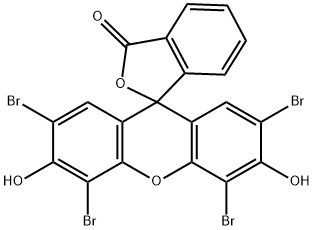A3143312
1,4-Dihydroxyanthraquinone , 96% , 81-64-1
Synonym(s):
1,4-Dihydroxyanthraquinone;Quinizarin
CAS NO.:81-64-1
Empirical Formula: C14H8O4
Molecular Weight: 240.21
MDL number: MFCD00001209
EINECS: 201-368-7
| Pack Size | Price | Stock | Quantity |
| 25G | RMB23.20 | In Stock |
|
| 100G | RMB64.00 | In Stock |
|
| 250g | RMB111.20 | In Stock |
|
| 500G | RMB206.40 | In Stock |
|
| 2.5KG | RMB835.20 | In Stock |
|
| others | Enquire |
Update time: 2022-07-08
PRODUCT Properties
| Melting point: | 195-200 °C |
| Boiling point: | 450 °C |
| bulk density | 350kg/m3 |
| Density | 1.3032 (rough estimate) |
| vapor density | 8.3 (vs air) |
| vapor pressure | 1 mm Hg ( 196.7 °C) |
| refractive index | 1.5430 (estimate) |
| Flash point: | 222 °C |
| storage temp. | Store below +30°C. |
| solubility | <1g/l |
| pka | pK (18°) 9.51 |
| Colour Index | 58050 |
| form | powder |
| color | red-brown |
| Water Solubility | <1 g/L (20 ºC) |
| Merck | 14,8064 |
| BRN | 1914036 |
| InChIKey | GUEIZVNYDFNHJU-UHFFFAOYSA-N |
| LogP | 4.2 at 25℃ |
| CAS DataBase Reference | 81-64-1(CAS DataBase Reference) |
| NIST Chemistry Reference | 9,10-Anthracenedione, 1,4-dihydroxy-(81-64-1) |
| EPA Substance Registry System | Quinizarin (81-64-1) |
Description and Uses
1,4-Dihydroxyanthraquinone is used to color gasoline and some heating oils. It is used as an intermediate for the synthesis of indanthrene- and alizarin-derived dyes. It is also used to form lake pigments with calcium, barium and lead. It may be used in the synthesis of cyclopentanoids by cyclization of α,β-unsaturated aldehyde with 1,4-Dihydroxyanthraquinone. It has been studied as a long range emissive ratiometric fluorescent probe for live cell imaging.
Safety
| Symbol(GHS) |  GHS09 |
| Signal word | Warning |
| Hazard statements | H410 |
| Precautionary statements | P273 |
| Hazard Codes | Xi,N |
| Risk Statements | 36/37/38-43-50/53 |
| Safety Statements | 22-24/25-36/37-26-61-60 |
| RIDADR | UN 3077 9 / PGIII |
| WGK Germany | 2 |
| RTECS | CB6600000 |
| TSCA | Yes |
| HS Code | 2914 69 80 |
| PackingGroup | III |
| Hazardous Substances Data | 81-64-1(Hazardous Substances Data) |
| Toxicity | LD50 orally in Rabbit: > 5000 mg/kg |




